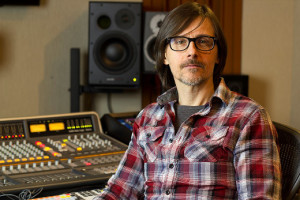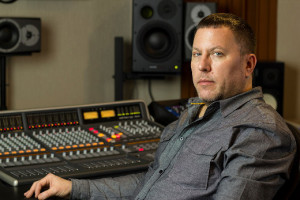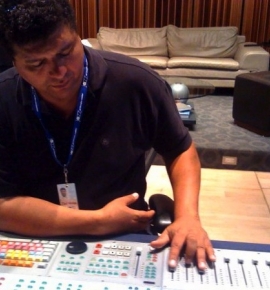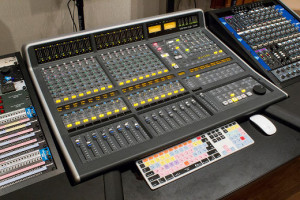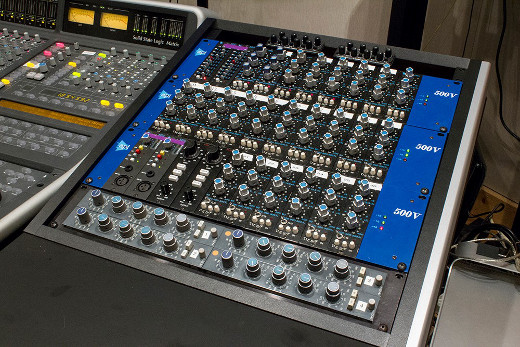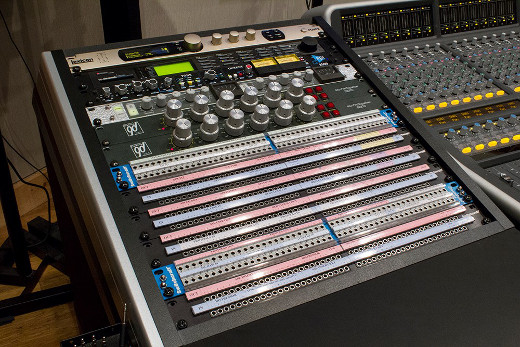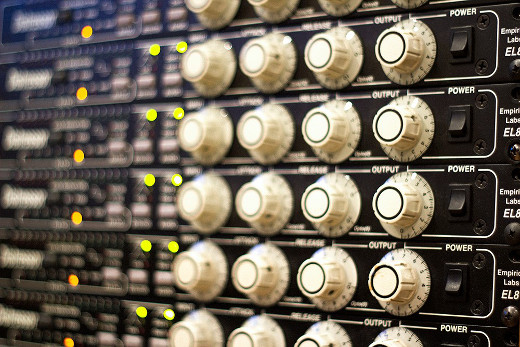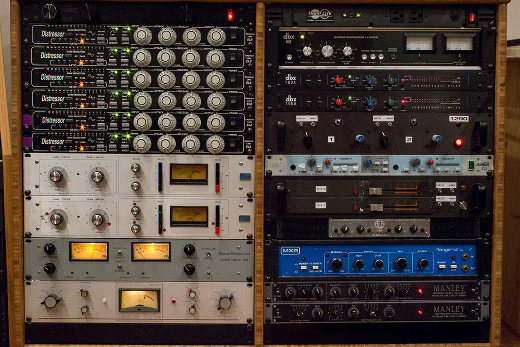Kaleidoscope Sound: Evolution of the Engineer-in-Residence
If you want to know what New York City recording is coming to – or rather, where it’s going – cast your eyes towards the Garden State.
While Brooklyn was seen for decades as an affordable haven for audio mavens, that era appears to be coming to a quick end. Condo development is currently sweeping out the homes of studios borough-wide, forcing engineers to find an alternative to the alternative.
For many displaced studio owners, just-across-the-river New Jersey locations are beginning to look more and more attractive. Joe Lambert Mastering’s recent leap from DUMBO to Jersey City is just one example of the exodus currently taking place – during the window that property values remain affordable there.
Another option that’s emerging is in neighboring Union City, where Kaleidoscope Sound continues to evolve its business model and make a positive impact along the way. In operation since 2001, the 48-channel API-equipped facility is showing how a commercial facility can move beyond simply charging for sessions – they can also partner with audio pros in long-term arrangements where everyone involved gets the win.
As a co-founder of Kaleidoscope, Randy Crafton has demonstrated what it takes to successfully pilot a studio through perilous waters. His M.O. involves staying alert for pivots, while still keeping firmly focused on maintaining audio excellence.
It’s a tricky balance, but to see how he brings in new blood while staying true to the core mission, read on.
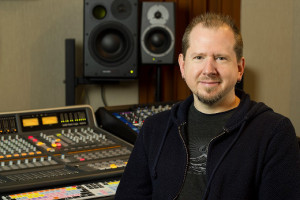
Tim Mitchell is operating “in-residence” at Kaleidoscope Sound in Union City. (Photo Credit: Kyle Cassel)
Tell us about one of the recent arrivals to the Kaleidoscope fold, Tim Mitchell.
I originally met Tim Mitchell (Sting, Robert Plant, Band of Horses) when he was just new to New York — he was introduced to me through a mutual friend, and great musician, Donny McCaslin. At the time, we were doing a lot of construction, and I think he was trying to avoid getting involved with that.
Tim landed a minor position at Clinton, and he proceeded to work his way up through the ranks there. By the time they closed — I am still bummed about that — he was doing a lot of work there. I contacted him to see what his plans were, and he had made a commitment to some of the other guys at Clinton to make a go of it in a space in Brooklyn [Brooklyn Aloha Recording]. Once again, bad timing.
We were in touch some over the following years, and as a result, he contacted me when things in Brooklyn began to shift beneath him. I believe the building has been cleared out, and is going to be condos — an all-too-familiar story.
What led you to realize there was room for an arrangement between the two of you?
I was not hiring at the time, but I suggested the agreement I have been working under with Wayne Dorell of the Pigeon Club, who is still here and doing well. He is essentially “in residence,” which means that he services his clients out of here, and we work out a mutually beneficial financial deal. It’s great for him because he just steps into a very fully functioning environment with no down time, and he carries no overhead when he is not working.
It’s great for me, because all I have to do is provide him with keys and an assistant until he gets to know his way around. It was not any big brainstorm of an idea, it was just a situation that arose, and we are making it work for both of us.
That said, I’m growing to like it because it allows me to have some great guys around with a lot of experience. I have been here for going on 14 years, and my enthusiasm for working 500 hours a week is not increasing, if you know what I mean! Having Wayne and Tim around keeps the studio humming, with less stress for me, and it brings in some great projects.
Chris Parks of Suprdupr Sound is another recent arrival as well, correct?
Chris is a musician/producer/engineer (Roberta Flack, Will Downing, Deborah Cox, Gordon Chambers) who originally came to me by way of our studio manager, Margo Parks — no relation. He lives in Jersey City, but was working out of his own space in Brooklyn.
When the space got cleared out to make way for condos, he was looking for a solution to continue working. He has been working not only out of the Patio, but has been doing a lot of work in A and Studio B. His original concern was whether his clients would follow him to New Jersey. If his schedule last month was any indication, I would say the answer is “definitely.”
Beyond the relationships, what’s needed on a technical level to fully support engineers who are working under arrangements like this?
I like the idea so much, that I’ve actively sought some other guys to bring into the “in residence” fold. It has also led us to modify and innovate the ways the studio works.
We have always been a Pro Tools-based facility. In fact, we just upgraded both of our rooms to Pro Tools 11, and upgraded our old 192’s in A to the new Avid converters. The 192’s had literally been on for 12 years, so it was time.
In the meantime, I was working on a recording with John Isley, Chris Anderson, and the New York Horns. We tracked in Pro Tools, and then John would take the sessions home and import them into Logic where he did all of his editing, comping, etc… John is a great musician, engineer, and serious Apple/Logic guy.
Once the record was done, we were looking for ways to do some more work together. He said he had some other projects coming up that he was producing, but it was tedious to move everything into Logic at the end of each session.
We came up with the idea that if he could set up a separate boot drive in the Patio, and get Logic working well with everyone in there, he could do his sessions there in Logic. He has done just that, and so far, it is seamless. John is now our “in residence” Logic guy.
As far as we know, we are the only large format commercial studio where Logic users can bring in their sessions and immediately have access to a pro room with a console, extensive outboard gear, a great mic locker, a great monitoring environment (5.1 in the patio), and all of the other pluses that come with a large format studio.
Is there a profile/common thread among the type of engineers you invite to work “in residence” – who makes the optimum fit?
Basically, I look for someone who has a clientele, but needs a place to work – it’s often someone who is getting priced out of their current space.
The most important criteria for me is that they are very good at what they do, and easy to get along with. Most of the people that are left in this field do it because it is who they are, and what they love to do. I find that a very good place to start.
On that tip, I understand Jeff Jones a.k.a. The Jedi Master is also working at Kaleidoscope – what type of productions is he doing at the studio?
The Jedi Master has done quite a few tracking sessions here over the last few years. I’ve really enjoyed spending time with him, exchanging ideas, and learning from his experience. If you know him, you know that he has his own unique way of doing things. The results are really great but the methodology is far from typical.
We are in the process of getting Digital Performer up and running in both of our rooms, so that he can remain in his native DAW as he tracks and overdubs. So far, this has not proven to be easy, but we are still working on ideas.
It has been great having him around because he is a real quality-first kind of guy. The first time he worked here, he came and found me after the session. He was so kind in saying, “You must be a great engineer. Everything here works!!” We get along very well.
There have also been several technical upgrades to the patio, including Logic and a new SSL Matrix – how did you decide to go with the Matrix?
As you might recall, we originally installed an Avid Icon D-control in the Patio. We loved everything about the room, except for that. A lot of research and thought went into how to change it to something that we loved. There are a lot of good options out there right now, but the one that seemed to really fill the bill for us was the SSL Matrix.
We have a lot of boutique outboard gear in the studio, including 10 vintage API 312 mic pres, 30 API 550a eq’s, 10 Universal Audio 1108 mic pres, 8 Neve pres, etc… That being said, it was not a lot of fun to have a 32-input session going in there without a console. The Matrix allows us to use it as an inline console at tracking, and gives us 32 inputs at mixdown. It is also give us the SSL flavor of sound at mixdown, which is distinctly different from the API Legacy Plus in our A room.
The Matrix also provides all of the DAW control that we use, which is mostly faders, pans, and a few other little things. Its small footprint keeps you right in the sweet spot when you’re working, and the workflow and total recall is wonderful. Ricky Begin came in and worked with us to re-wire all of the patch-bays in there, and it now flows like a large format console. You can track a session without a single patch, but you also have tremendous flexibility with signal routing in there as well.
It was not a consideration when we chose it, but it has turned out to interface very well with Logic as well.
Pulling back to the 10,000 foot view, what are the shifts that you are seeing in the New York City/New Jersey recording landscape? How are these creating both new challenges and new opportunities for Kaleidoscope?
Well…. I certainly do not want to sound like a downer, and I don’t have a lot to complain about, but…commercial recording as we know it is not a growing field. Budgets are shrinking, and a lot of things are self-produced.
There’s not much of a major label industry to speak of. It is all quite fragmented, and of course, a lot of work is being done in living rooms, basements, and garages that used to get done in a commercial studio. The well-documented finances of Spotify and other streaming services certainly do not provide budgets for future recordings.
However, in spite of all of this, there is a lot of music being produced, and some of it is really, really good. There is also a handful of fortunate people that just continue to make recordings as they always have. Rising rents, condos, floods, and shrinking budgets are pushing a lot of people out of spaces that they’ve been in for a long time. We are all having to re-think how we do things.
At Kaleidoscope Sound we happen to have a good amount of space on high ground, and we do not have a landlord. That makes it a stable situation. It is my hope that through opening up and working with other people that are great at what they do, we can create something sustainable, and keep the quality high.
Some of it involves opening up to other DAW formats, and being flexible to help people where they need help on a project that they are largely doing at home. Some of it involves providing a full service facility for people that still make recording the old ways. There are still a lot of great jazz artists here in the NYC area — there is really only one way to make those recordings, and it still requires all of the things that we offer.
— David Weiss
Please note: When you buy products through links on this page, we may earn an affiliate commission.








